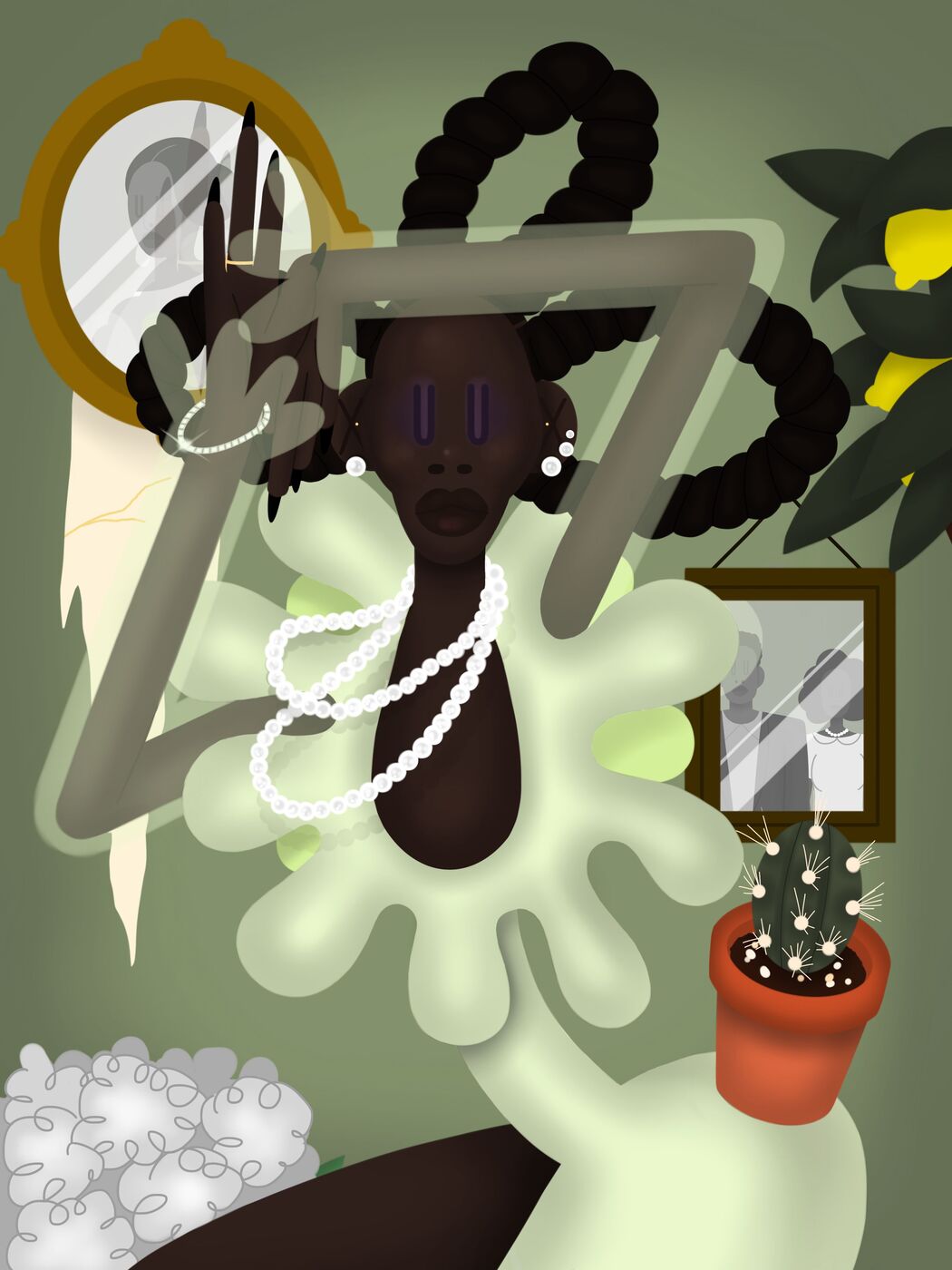Izosceles
Where do you live Seattle, Washington.
Your discipline: Visual Art.
Website | Instagram
Your work has a vibrant, playful quality reminiscent of pop cartoons. What inspired you to focus on this style, and how do you see it fitting into the broader art world?
I, even as an adult, am still very much an avid consumer of pop cartoons such as The Simpsons, Bob’s Burgers, The Powerpuff Girls (1998 series)—the list goes on! I just love the bright vivid colors coupled with the boundless storytelling that you can only achieve through a medium like cartoons or visual art.
As far as how I see it fitting into the broader art world: it has. It may cause audiences to do a double-take, especially if the majority of the art shown is classical painting and sculptures, but I believe it has its place amongst art that may not look closely like it.
You mentioned that cartoons and fun visuals should be seen as seriously as fine art. How do you think audiences can start appreciating these styles in that way?
I think audiences can start appreciating these styles by connecting it back to their lives. A good majority of us have grown up with cartoons, and cartoons, though simplified and exaggerated, still maintain and rely on fundamental artistic principles for them to even exist. So cartoons are art, just simplified and more palatable art.
 Izosceles | Y’ain’t Goddu
Izosceles | Y’ain’t Goddu
How has your approach to creating art evolved from your early days of drawing as a child to now as a professional artist?
This may surprise a lot of people, but my approach has changed greatly. When I was a child, I would draw what would immediately come to mind, even going so far as to draw over drawings I’d already drawn on paper. Your imagination is limitless and knows no bounds because the form of expression is so new and no one has yet told you what you cannot do.
These days I try to create with intention and meaning even though on the surface a lot of the work could appear as though it’s the opposite. I mentioned fundamental artistic principles, and now that those are tools that I’ve picked up along the way, I like to try to implement them into my work.
Pop culture often plays a huge role in your work. Are there specific shows, movies, or other pop culture references that have influenced your style the most?
Studio Ghibli. I love those cinematic masterpieces. There’s always a lesson or important jewel embedded in the beauty of those films. It’s almost like “hiding medicine in the candy.”
Your characters and scenes have a unique energy to them. How do you bring that liveliness to your work, and what techniques do you use to make them feel engaging?
I feel like color specifically takes the credit for the liveliness in my work. Color as well as form, because a lot of the figures or people in my art move and behave in a way that is consistent with people who have either no bones or solid structure beneath them—they’re able to get away with so much more.
Do you think the digital medium plays a role in how audiences connect with your work?
I think so, yes.
I feel like the fascination with digital art is still very much a thing. I think people think that it’s very cool how someone can create something of substance by guiding a small cursor to something of great detail—even in the age of artificial intelligence. I feel like when I tell people I drew it on my computer, their eyes almost light up, meanwhile I don’t feel as awestruck. Maybe it’s because I’ve done it for so long and am desensitized to what I can accomplish.
How do you feel about blending traditional and digital techniques?
I feel like I haven’t done it in a while; however, I am not against it.
I’m sure there will be days where an idea will hit me and I may not have my iPad or MacBook on hand and all I have is paper and a pencil. Once I get the idea drawn on paper, I can always scan it and add sauce to it to get it to how I see it in my head. That’s blending at the very basic level. I can see myself adding paint or clay, glitter, or holographic elements to a canvas. Sure, why not?
Can you share a bit about your creative process? How do you typically start a new piece, and what are the main steps you follow?
At the risk of sounding like a broken record: I utilize fundamental artistic principles, and even more specifically, how I start something: I try to lay down basic shapes like circles, triangles, and rectangles to lay down a basic framework, and once that gets established, I get messy and sketch around those basic shapes to further establish what I’m trying to get out.

Leave a Reply